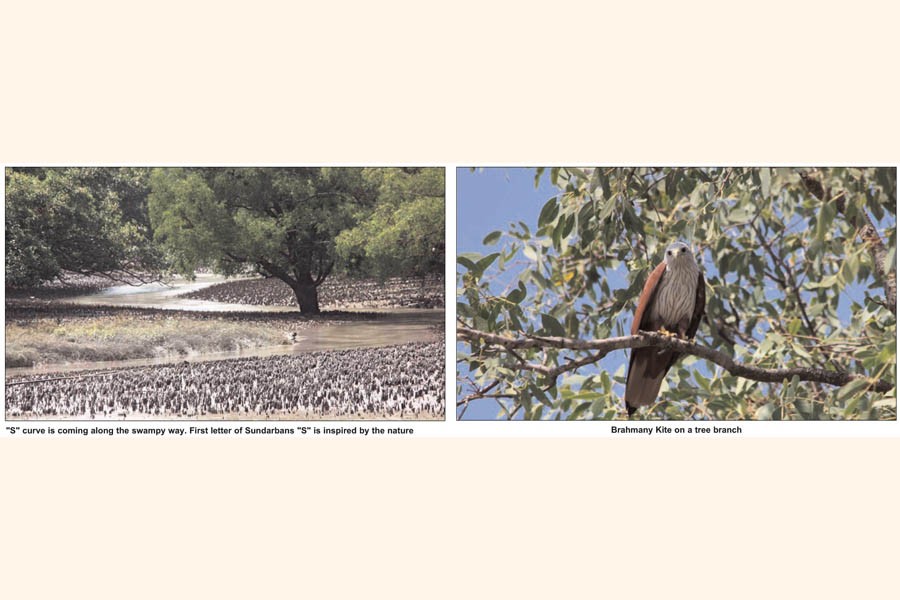
Bangladesh's Sundarbans forest is remote and well known to the world for big cats' presence in the wild. It is also the world's largest mangrove forest. Every year, thousands of visitors from around the globe find their way here. This jungle is a highly recommended place to visit as it is considered as Asia's greatest treasure for the wildlife enthusiasts.
I visited Sundarbans several times to spot the Royal Bengal Tigers. Unfortunately, luck didn't favour me till today. But my last visit was worth mentioning for a reason, i.e. wildlife photography with newly-bought 300 mm zoom lens.
The Sundarbans provides the world's largest mangrove ecosystem and a rich wildlife habitat. Wildlife enthusiasts from the world are tempted to visit this marshy land.
No adventure seekers can say no to visiting the Sundarbans. Bangladeshi tour operators have mastered in serving foreign visitors into the wild on vessels meticulously.
ANIMAL PLANET: It provides incredible animal sightings if you are lucky enough to see big cats. Their behavior is exciting in the Sundarbans. Like humans as we live in habitat, they also live and die in this ethereally beautiful land. Feeding, cheering, chirping, mating, bonding all happen here. And I have seen it all.
During my 3 days and 2 nights' stay in the wild of Sundarbans, I have seen Wild Boar, Rhesus Macaque, and Spotted Deer in mammals' species. Whereas Saltwater Crocodile, Monitor Lizard, Mudskipper, and Snake gave me immense professional pleasure while doing the photography.
Spotting birds in the wild and getting those shots were never been so easy. I have captured Lesser Adjutants, Pariah Kites, Brahmany Kites, Great Egrets, Herons, Common Kingfisher and many other unknown birds during my trip to the Sundarbans.
SUNDARBANS' TIGERS AND MY FATE: Out of several attempts in the Sundarbans, I have seen a tiger's paw on the surface, scratching on tree bark and poop. Groaning of a tiger is a scary thing to encounter. On rare occasions, visitors are lucky enough to see the target chosen by a tiger.
HOW TO REACH SUNDARBANS: I had an overnight bus journey from Dhaka to Khulna on a luxury air-conditioned coach. As it came into Rupsha-Pashur River, we transferred to MV Dinghy. It was our luxurious vessel where we had been accommodated for 3 days including 2 nights. After reaching the first forest check-post for completing forest formalities, we started our 12-hour journey all the way up to deep forest of Kotka. Statistically speaking, tigers are found most in the Kotka area.
SUNDARBANS CREEK TRIP & BEACH EXPLORATION: DAY 1: Around 5.40 a.m. we went to experience the creek trip in the deep forest by a country boat. It was like enjoying the sound of the silence. To enjoy the nature and sound of Sundarbans, you have to have the capacity of being completely silent. The canal trip lasted 90 minutes. Everyone was mesmerized by seeing the raw forest beauty of the Sundarbans. Bird's chirping sound, the sound of Rhesus Monkeys, and the sound of the waterfall through the creeks caused by low tidal effect were very fascinating and endearing.
After the lunch hour, we went for deep forest trekking activities on the swampy land of Kotka's west bank. In the first part, we had to walk through marshy land for 15 minutes. Then in the second part, we had to walk through the knee height waterway for 10 minutes. In the last part, it was so scary because we had to walk through a very dense forest. We were frightened by the tiger attack during the last part of the trekking. Thank god, we were all safe and sound with flesh and blood.
DAY 2 IN SUNDARBANS: Watching closely this deep forest for the final time, there were heavy rains over the creek. Suddenly I saw two water monitor lizards making unknown sounds: the mating calls of lizards across the water, the act of natural intercourse of this creature to make sure this wild sanctuary remains full of life.
We experienced a gusty storm. We took shelter at the guard office in the deep forest. When the rain was over, a spectacular rainbow blew our eyesight on the horizon.
ECONOMIC VALUE TO PROMOTE SUNDARBANS: Sundarbans is home to one of finest animals on the earth, the Royal Bengal Tiger. This Bengal Tiger is a pride for Bangladeshi people. This is indeed the quintessential identity for the mass people of Bangladesh on the global scene.
To conserve the Sundarbans and its biodiversity by safeguarding the tigers is now the demand of the time. While hard work on the ground level and goodwill gesture by donor agencies helped reduce human-tiger conflicts, it is helping avert tiger poaching. Through working with the local villages, perceptions are changing now. Their duties include tiger tracking and stopping hunts, while villages' monitoring camera traps are rewarded with change in mindset of the locals' attitude.
It's an ongoing battle, when entry fees from visitors are important in helping save the Sundarbans' finest wildlife.
BEST TIME TO TRAVEL: The last piece of advice. I recommend that the travelers make a trip to Sundarbans in the winter. The ideal time would be to visit Sundarbans between November and February. I strongly advise not to visit Sundarbans those who are physically and mentally unfit.
The contributor is a freelancer,
[email protected],www.sajjadtravelogue.com


